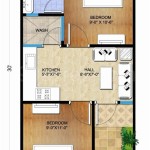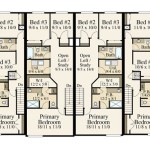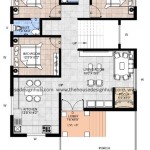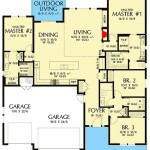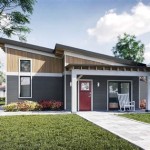One Bedroom Apartment Floor Plans: Designing for Comfort and Functionality
One-bedroom apartments offer a compact and efficient living space, making them ideal for individuals, couples, or small families. With a well-designed floor plan, these apartments can provide all the necessary amenities while maximizing space and creating a comfortable living environment.
Types of One-Bedroom Apartment Floor Plans
There are several common types of one-bedroom apartment floor plans, each with its own advantages:
- Studio Apartment: A studio apartment combines the living room, bedroom, and kitchen into a single open space, making it ideal for those seeking a minimalist lifestyle.
- Alcove Studio: Similar to a studio, an alcove studio features a sleeping alcove that is semi-separated from the living area, providing some privacy.
- Junior One-Bedroom: A junior one-bedroom apartment typically has a separate bedroom but lacks a formal living room. Instead, it may have a dining area or a designated living space within the bedroom.
- Traditional One-Bedroom: The most common type of one-bedroom floor plan, it features a separate bedroom, living room, kitchen, and bathroom.
Key Considerations for One-Bedroom Apartment Floor Plans
When designing or choosing a one-bedroom apartment floor plan, several key considerations arise:
- Efficiency and Flow: The floor plan should maximize space and ensure smooth transitions between different areas. Avoid narrow hallways or awkward angles.
- Light and Ventilation: Natural light is essential for any living space. Look for floor plans with ample windows and cross-ventilation to create a bright and airy atmosphere.
- Storage: Storage is crucial in compact apartments. Consider built-in storage solutions, such as closets, under-bed drawers, and wall-mounted shelves.
- Kitchen Layout: The kitchen should be functional and space-saving. Consider a galley-style layout with appliances and cabinets on opposite walls or an L-shaped kitchen with a peninsula to define the space.
- Bathroom Design: The bathroom should be comfortable and efficient. Look for floor plans with a good-sized shower or tub, adequate storage, and a separate toilet area.
Designing a One-Bedroom Apartment Floor Plan
Creating a well-designed one-bedroom apartment floor plan requires careful planning:
- Start with a Sketch: Begin by sketching out the desired layout to get a general idea of how the space will be used.
- Determine the Core Layout: Decide on the type of floor plan (studio, alcove, junior one-bedroom, or traditional) that best suits the needs.
- Position Key Elements: Place the bedroom in a quiet area, the kitchen near a window, and the bathroom close to bedrooms.
- Define Spaces: Use furniture, curtains, or room dividers to create separate areas for sleeping, living, and dining.
- Consider Vertical Space: Utilize vertical storage solutions, such as floating shelves, built-in cabinets, and loft beds, to save floor space.
Conclusion
One-bedroom apartment floor plans offer versatile living solutions that can combine comfort, functionality, and efficiency. By understanding the different types of floor plans available and considering key design considerations, you can create a one-bedroom apartment that meets your unique needs and enhances your lifestyle.

One Bedroom Standard Floor Plan Apartments In M Massachusetts Princeton Crossing

Floor Plans The Central Apartments

Selecting The Right Apartment Floor Plans Apartments For In Heights Houston

Image From Http Www Homedecorlike Com Wp Content Uploads 2024 12 Small One Bedroom Garage Apartment Floor Plans Tiny House

1 Bedroom Apartment Plan Examples

1 Bedroom Apartment Plan Examples

Small One Bedroom Apartment Plans Tiny House Floor

1 Bedroom Apartment House Plans

One Bedroom Style 1e Vantage On The Park

Apartments Country Charm


